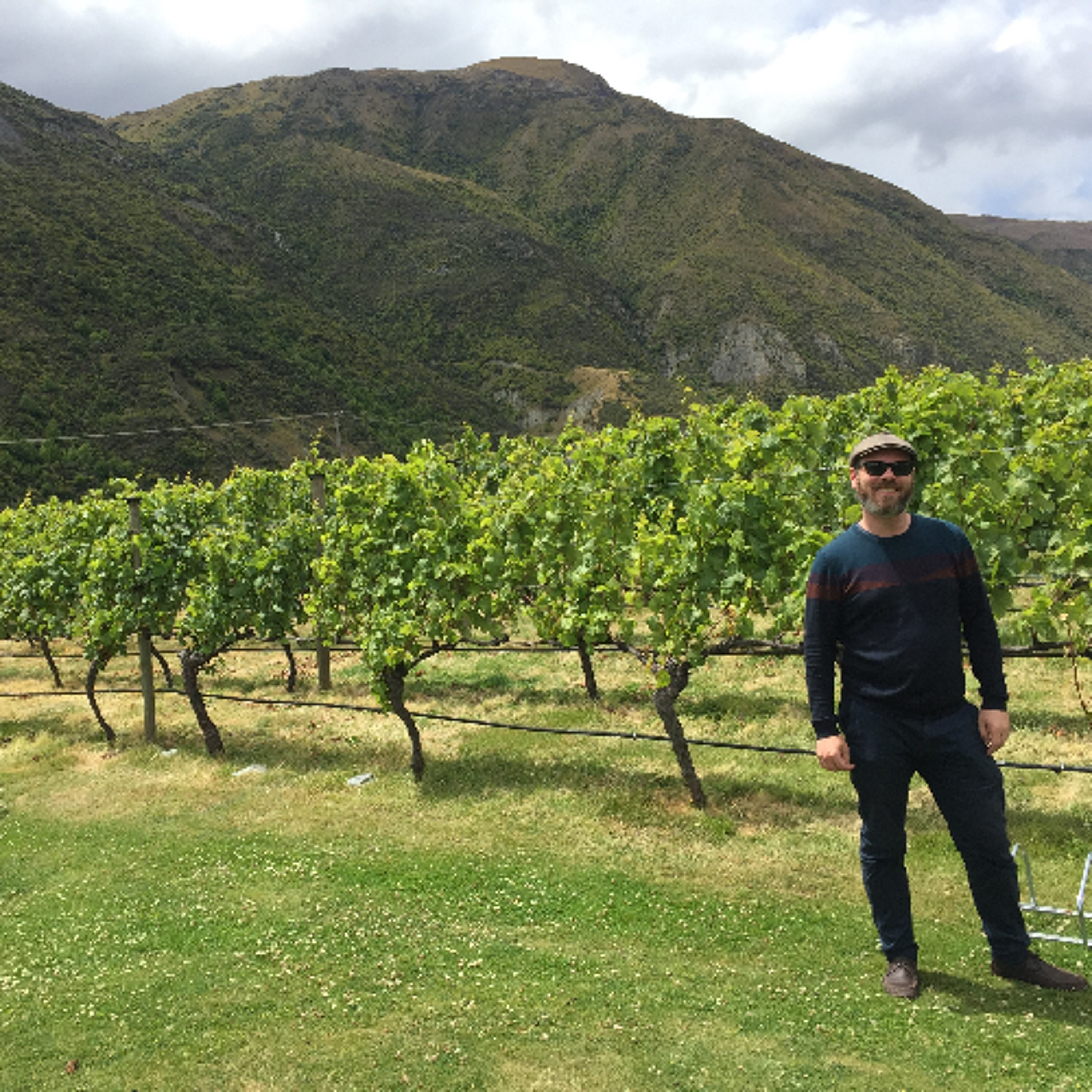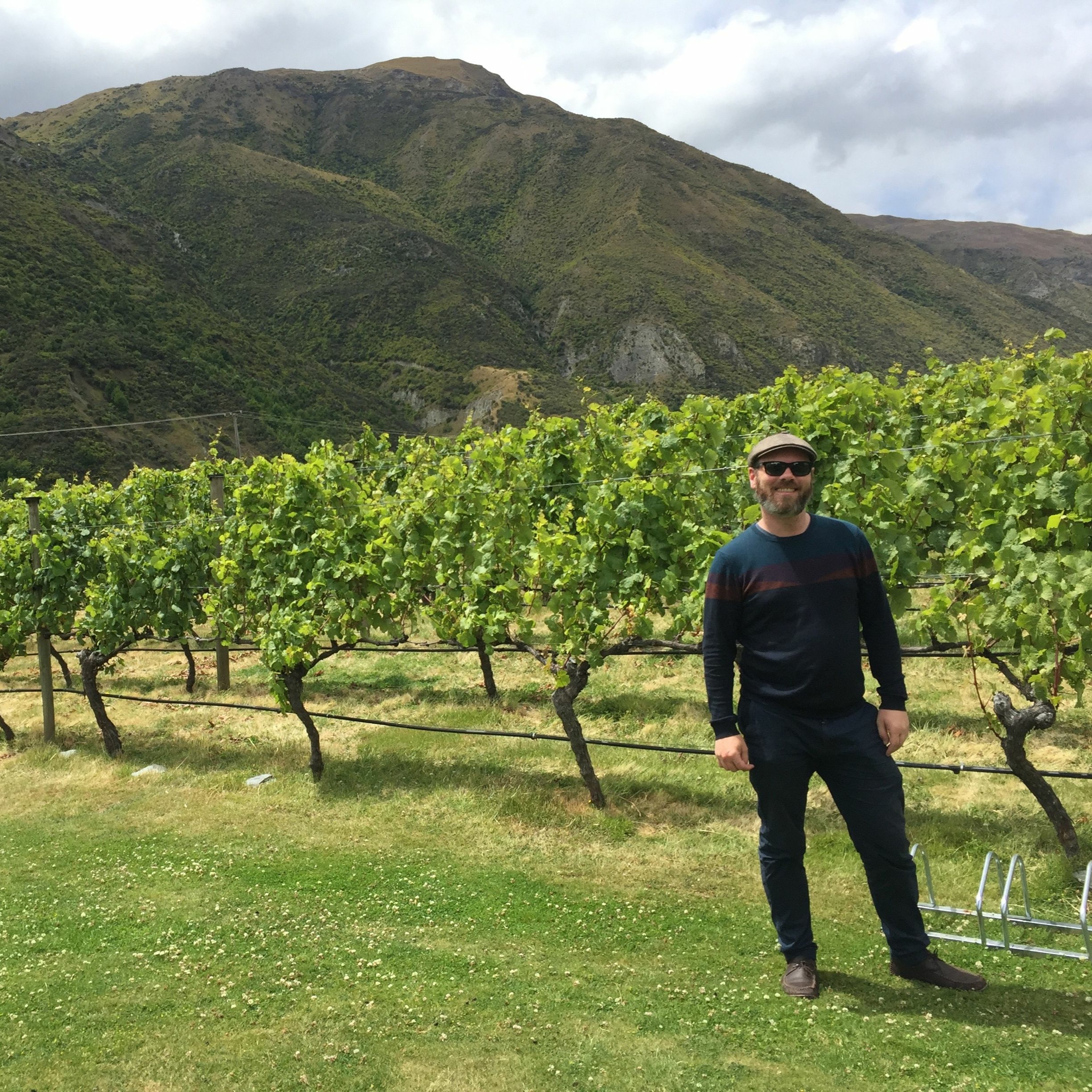Discover Matthew's World of Wine and Drink
Matthew's World of Wine and Drink

Matthew's World of Wine and Drink
Author: Matthew Gaughan
Subscribed: 215Played: 8,486Subscribe
Share
© All rights reserved
Description
An Englishman in California soaking up the sun, I am a WSET Diploma graduate and Certified WSET Educator. I blog about wine, teach it at all levels, and drink plenty of it. Follow me on twitter @mattswineworld or check out my website: matthewsworldofwineanddrink.com
199 Episodes
Reverse
Terah Bajjalieh is an up-and-coming winemaker in California, making wine from Grenache, Syrah, Vermentino, and Falanghina. The wines are modern expressions of California, but also representations of California's Mediterranean climate and its history from the early days of the nineteenth century. In this episode, we talk about all things California in relation to these Mediterranean varieties.
Gouais Blanc is a little-planted white grape variety that in the past has been banned in France. It produces indeterminate, high-acid wines, but is indirectly responsible for some of the greatest wine in the world. Through natural crossings, it's the parent of Chardonnay, Aligoté, and Gamay in Burgundy/Beaujolais, as well as Riesling, Furmint, and Blaufränkisch. Without Gouais Blanc, wine as we know it wouldn't exist, nor would our understanding of DNA and grape genetics.
Julian Hanna has just published "Island," a book all about island life. In this episode, I interview him all about island culture and how it differs from the culture of the "mainland." We take in islands associated with wine in many different ways: Madeira, Sardinia, Tasmania, New Zealand, and plenty of others.
Henry Jeffreys's book, Vines in a Cold Climate, is an essential and extremely engaging history of the development of English wine since the 1970s. He interviews many characters and charts the change from amateur DIY winemakers to the professionalism of the industry in the 1990s to the investment from wealthy entrepreneurs in the 2000s onwards. I talk to him about how English wine, sparkling in particular, has become such a talking point, referencing the climate, the place, and the people behind the rise of the industry.
Author and podcaster Natalie MacLean gives a thirty-minute overview of Ontario wines: climate, Ice Wine, Riesling, Vidal, Chardonnay, Cabernet Franc, sparkling wine. A must for any student wanting to more about Canadian wine and Ontario (the largest region) specifically.
visit https://www.nataliemaclean.com/ for more on Canadian wine
Luke Whittall is the author of The Sipster's Pocket Guide which is an annual overview of the best wines made in British Columbia. This interview with Luke is a great insight into and overview of British Columbia wines, which are getting more and more interesting. Learn about the regions—especially Okanagan Valley—the climate, the grape varieties, and the styles of wines. Even if they're hard to find, you need to know about them.
Interview with Rui Lucas of Prior Lucas in Bairrada, Portugal. It's a region heavily influenced by the Atlantic Ocean, and therefore cooler and wetter than other areas further inland. Baga is the main variety, well-suited to the humid climate, producing tannic, high-acid, ageworthy wines. There's also sparkling wine made, which we talk about in this episode. Bairrada is an interesting, very individual region!
https://priorlucas.pt/
Interview with Peter Andrews of Culture Wine Co, who's importing South African wine into California. Topics covered include Pinotage; Mediterranean varieties; Sauvignon Blanc; the regionality of South Africa; innovative winemakers; racial diversity; and future trends for South African wine.
The Michigan wine scene is relatively new, growing in the last few years. I speak to Drew Perry of Simpson Family Estates, who started in 1980—dicsussing the growing conditions, the grape varieties, and the wines of the emerging industry.
Gamay: a high-yielding variety associated with youthful, fruity wine but which, in the right growing conditions, makes wonderful, structured wines. This episode explores the areas where Gamay is grown: Beaujolais of course as well as Loire, Savoie, Lorraine, Switzerland, the US, and New Zealand.
Winemaking in Armenia goes back at least 6,000 years, one of the starting points of viticulture. But it's only in the last ten to fifteen years that there has been a renaissance in quality wine. Vahe Keushguerian has been at the forefront of this renaissance, both in his own projects and for other fledgling wineries. In this episode, he explains all about Armenian wine—history, geography, grape varieties, styles of wine, and where the industry is heading.
Brazil's wine industry has gone through many changes since the 1990s, and is still finding its feet. The focus on quality wine began with sparkling wine, with investment from French producers, and has continued with a focus on grape varieties such as Tannat. The climate changes drastically from region to region, and grape-growing can be difficult. My interview with winemaker Flavio Pizzato explores why Brazil is quite different from other South American wine countries.
Brad Hickey has been making wine in McLaren Vale for over fifteen years, in a range of styles that reflect the Mediterranean climate of the region. This episode focuses on his experiences in McLaren Vale, and the wines being made there. A great insight into one of Australia's most historic but experimental wine regions.
A conversation with Garth Hodgdon of Cage Imports, which imports 15 small Champagne producers into the USA. We talk about trends in Champagne, how to discover those small producers (and who they are), who's drinking champagne, and why Meunier rocks!
Visit Cage Imports: https://www.cageimports.com/
Plantings in Mexico date back to the 1520s, although the development of the wine industry was curtailed by Spanish colonial intervention. Since the 1980s, there has been a renaissance for Mexican wine, with many regions emerging. In this episode, I interview Stephen Ott of Nossa Imports about the wine regions of Mexico, the grape varieties, the styles of wine, and the potential future of Mexican wine.
Connect with Stephen at Nossa Imports: https://www.nossaimports.com/
Georgia is one of the world's oldest winemaking countries. Traditions—such as amber wine and wine made for home consumption—continue, which make Georgian wine a wonderful trip to the past. But it's also an evolving wine country, with regions producing different expressions from the many local grape varieties. In this episode, I interview Tom Williams of Eat This! Food & Wine Tours, who specialises in explorations of Georgian wine and provides a fascinating insight into Georgian culture.
If you're visiting Georgia, then connect with Tom through his website: https://eatthistours.com/
Interview with Mari Jones of Emeritus Vineyards in Sonoma County, who began the conversion to dry farming in 2008. In tandem with the selection of suitable clones and rootstocks, the vineyards are now well-established without the need for irrigation. Mari tells how they oversaw the conversion and the consequent health of the property.
Celebrating its 50th anniversary, Long Island has unique growing conditions heavily influenced by the Atlantic Ocean. I interview three producers: Jenny Smith from Pellegrini (on the North Fork), Roman Roth of Wölffer Estate (in The Hamptons), and Jonathan Romberg of RGNY (a much younger winery also on the North Fork). Our conversation explores the growing conditions, the styles of wine, and the market for Long Island wines.
Wine has been made in Albania for thousands of years, and grape-growing used to be central to its culture before rule by the Ottoman Empire and then an isolated communist regime led to a centuries long decline in wine production. It's still a predominantly agricultural country and winemaking is coming back, with international varieties and interesting, largely unknown indigenous grapes.
Two neighbouring countries, formerly of Yugoslavia. Kosovo's winemaking history goes back 2,000 years, with a renewed focus on quality after the bulk wines under Yugoslavia. Montenegro has one of the largest vineyards in Europe, with research into indigenous varieties and how best to develop them to advance the country's wine culture. Lots of history, with exciting potential for the future.
Comments
Top Podcasts
The Best New Comedy Podcast Right Now – June 2024The Best News Podcast Right Now – June 2024The Best New Business Podcast Right Now – June 2024The Best New Sports Podcast Right Now – June 2024The Best New True Crime Podcast Right Now – June 2024The Best New Joe Rogan Experience Podcast Right Now – June 20The Best New Dan Bongino Show Podcast Right Now – June 20The Best New Mark Levin Podcast – June 2024
 United States
United States



















